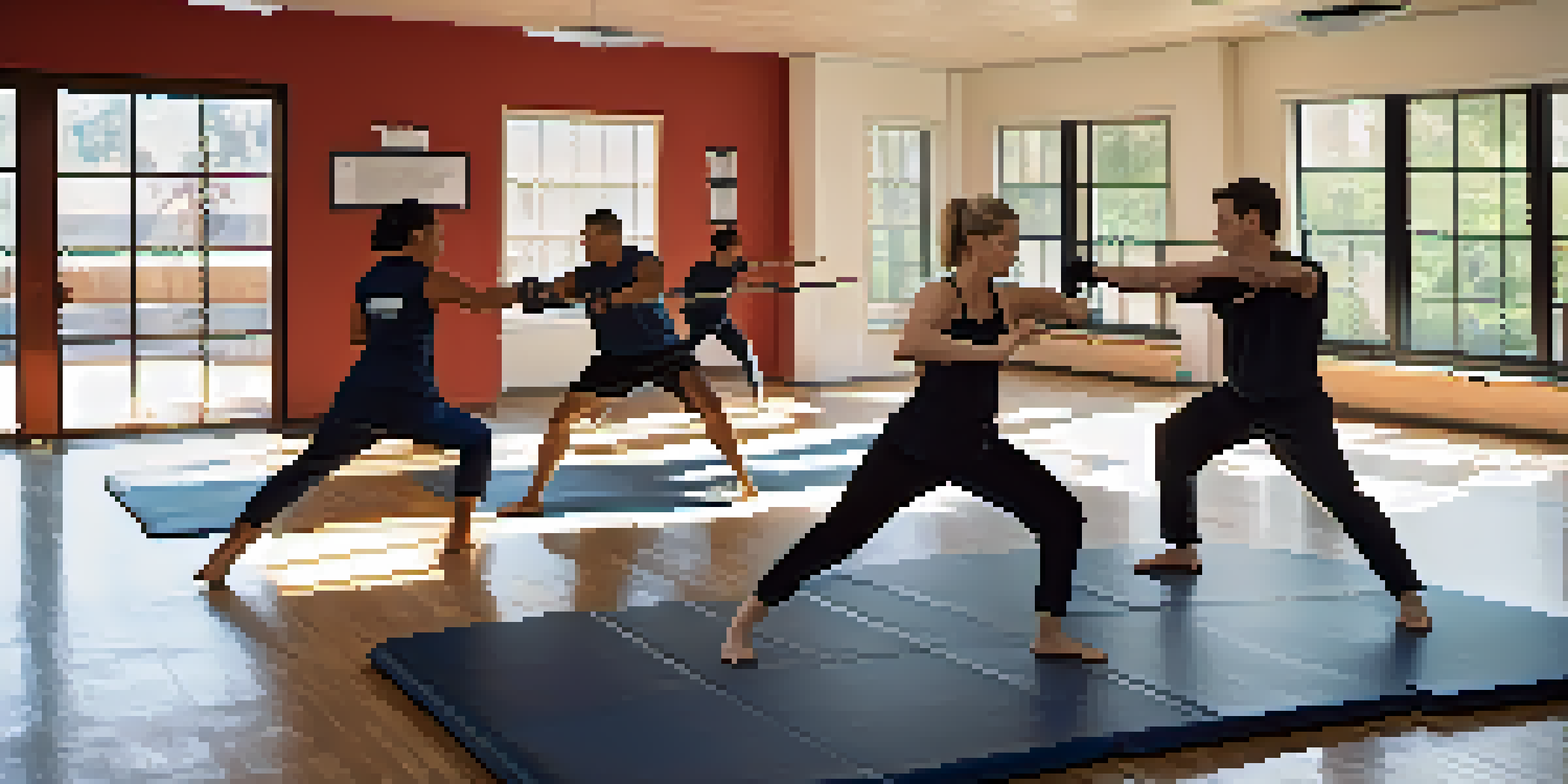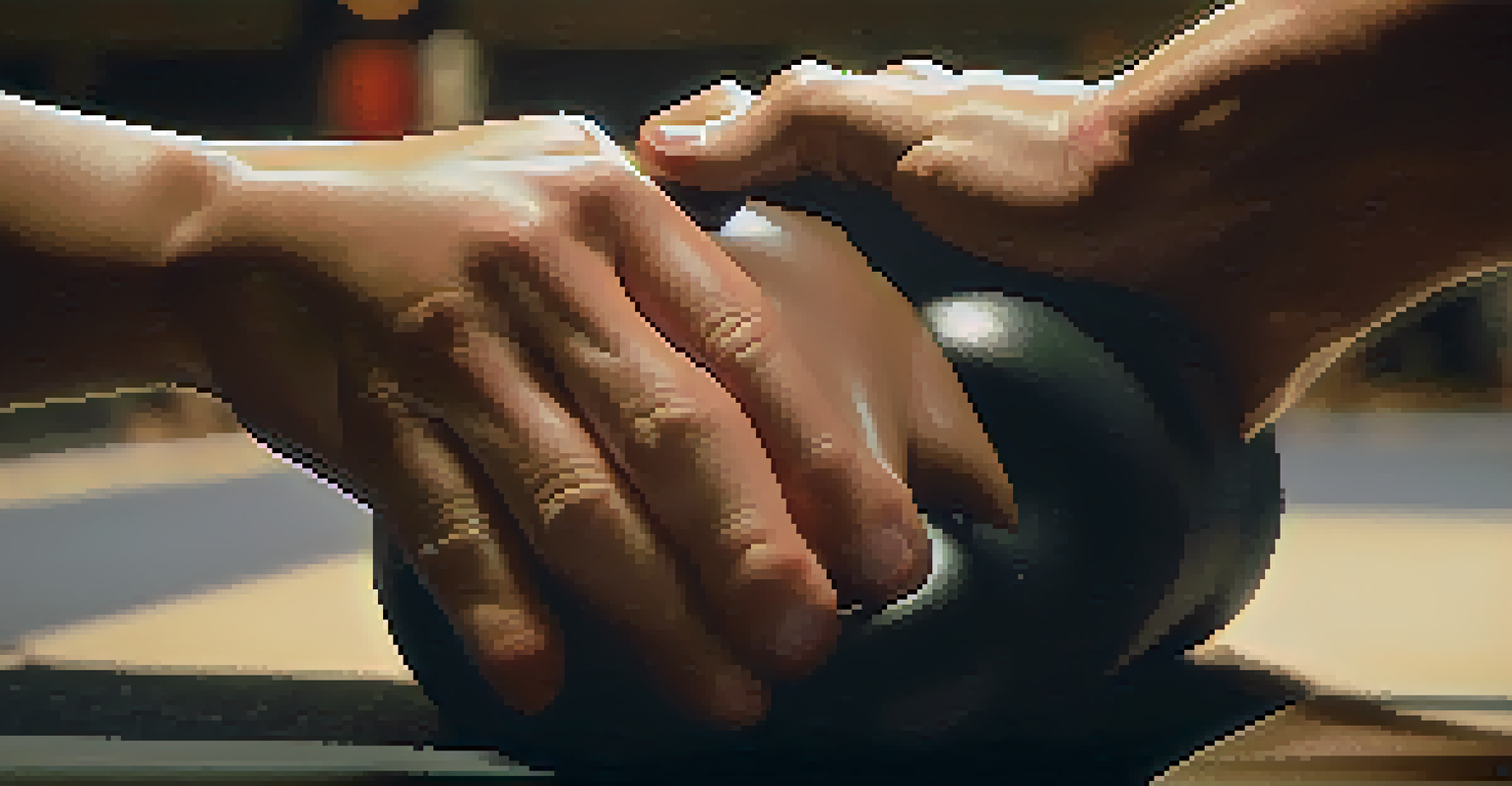The Role of Visualization in Self Defense Preparedness

Understanding Visualization and Its Importance
Visualization is a mental technique where individuals imagine themselves successfully performing tasks. In the context of self-defense, it involves picturing scenarios where one may need to react defensively. This practice not only prepares the mind but also bolsters confidence, making it a crucial part of self-defense training.
Visualization is daydreaming with a purpose.
By visualizing potential threats and appropriate responses, practitioners can create a mental blueprint for action. This mental rehearsal can significantly reduce anxiety and enhance focus when faced with real-life situations. Essentially, it’s about training the mind to respond instinctively in stressful moments.
Moreover, visualization can bridge the gap between theoretical knowledge and practical application. When individuals mentally practice their moves, they reinforce the neural pathways that govern those actions, making them more likely to execute them effectively in a real encounter.
How Visualization Boosts Confidence
Confidence plays a pivotal role in self-defense, as it influences how individuals react under pressure. Visualization helps build this confidence by allowing practitioners to experience success in their minds before encountering real threats. Just like athletes visualize winning their games, self-defense students can visualize overcoming an attacker.

When individuals repeatedly imagine themselves successfully defending against an assailant, they start to believe in their capabilities. This mental success can translate to increased self-assurance in real-life scenarios, where hesitation can be detrimental. Visualization thus acts as a mental rehearsal, preparing the mind to stay calm and collected.
Visualization Enhances Self-Defense
Mental imagery prepares individuals for real-life threats by reinforcing instinctive responses.
Additionally, this practice can help mitigate the fear that often accompanies self-defense situations. As practitioners visualize themselves handling various confrontations, they become more familiar with the potential challenges, reducing the element of surprise and the fear that comes with it.
Techniques for Effective Visualization
To harness the power of visualization, practitioners can use several techniques to enhance their mental training. One effective method is to find a quiet space where they can focus without distractions. By closing their eyes and imagining specific scenarios, individuals can create vivid mental images of themselves successfully executing self-defense moves.
What the mind can conceive and believe, it can achieve.
It's also beneficial to incorporate all senses into the visualization process. Practitioners should not only see themselves in action but also hear sounds, feel physical sensations, and even smell the environment. This multisensory approach makes the visualization more realistic and impactful, leading to greater retention of the skills learned.
Moreover, repeating the visualization regularly can solidify these mental images. Just like physical training, consistency is key; individuals should set aside time daily to practice mental rehearsals. Over time, this commitment can significantly enhance their readiness for real-life situations.
Integrating Visualization into Training Routines
Visualization should not be a standalone practice but rather integrated into regular self-defense training routines. Instructors can encourage students to visualize techniques before physically practicing them. This approach can enhance understanding and execution, as students are mentally prepared to implement what they’ve visualized.
In addition, pairing visualization with physical drills can create a more holistic training experience. For example, after practicing a specific technique, students can take a moment to visualize themselves performing that move in a real situation. This combination reinforces learning and makes the skills more ingrained.
Building Confidence Through Visualization
Practicing success in the mind boosts self-assurance, making practitioners more effective in high-pressure situations.
Furthermore, instructors can create guided visualization sessions during classes. These sessions can help students collectively imagine scenarios, fostering a supportive environment where everyone is working towards the same goal of preparedness and confidence.
Real-Life Success Stories: Visualization in Action
Many self-defense practitioners and athletes credit visualization for their success in high-pressure situations. For instance, martial artists often share how mental imagery helped them prepare for competitions or sparring sessions. By visualizing their opponents' moves and their responses, they could anticipate actions and react more effectively.
There are also stories of individuals who faced real-life threats and relied on their visualization practices. They reported that the mental rehearsals they performed enabled them to remain calm and focused, allowing them to use their training effectively. Such accounts highlight the tangible benefits of incorporating visualization into self-defense preparation.
These success stories serve as powerful reminders of the impact that visualization can have on readiness. They demonstrate that mental training is just as vital as physical practice, reinforcing the idea that a well-rounded self-defense strategy includes both aspects.
Overcoming Challenges in Visualization Practices
While visualization can be a powerful tool, some practitioners may face challenges in effectively using this technique. For instance, individuals may struggle to maintain focus or find it difficult to create vivid mental images. Recognizing these challenges is the first step toward overcoming them and enhancing the effectiveness of visualization.
To address focus issues, practitioners can start with shorter visualization sessions and gradually increase the duration as they become more comfortable. Engaging in mindfulness practices can also help improve concentration and mental clarity, making it easier to visualize scenarios. This gradual approach allows individuals to build their visualization skills over time.
Integrating Visualization in Training
Combining visualization with physical drills creates a comprehensive training approach that enhances skill retention.
Additionally, seeking guidance from instructors or experienced practitioners can provide valuable insights. They can share tips and techniques that have worked for them, helping others to refine their visualization practices. By working through these challenges, individuals can unlock the full potential of visualization in their self-defense preparedness.
Future of Visualization in Self Defense Training
As self-defense training continues to evolve, the role of visualization is likely to expand. With advancements in technology, practitioners may soon utilize virtual reality (VR) to enhance their visualization experiences. VR can create immersive environments where individuals can practice their visualization in realistic scenarios, bridging the gap between mental and physical training.
Furthermore, increased awareness of the psychological aspects of self-defense is leading to a greater emphasis on mental training techniques. As more instructors incorporate visualization into their curricula, practitioners will have access to a more comprehensive approach to self-defense. This evolution will empower individuals to be better prepared and more resilient.

Ultimately, the future of visualization in self-defense training looks promising. As more people recognize its benefits, we can expect to see a shift towards a more holistic view of self-defense, where mental preparedness is valued just as much as physical skill. This balance will create more confident and capable individuals ready to face any challenge.